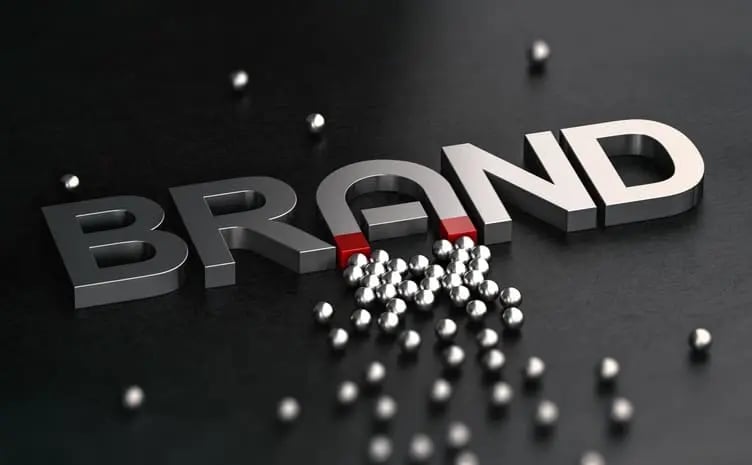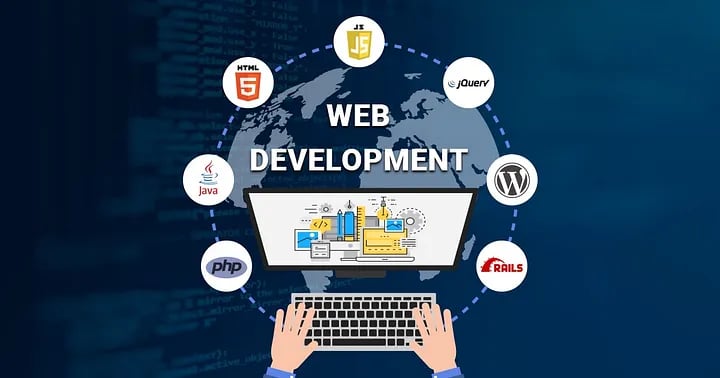
Marketing your business effectively often depends on reaching the right customers at the right time. With PPC, or Pay-Per-Click marketing, you have the opportunity to drive targeted traffic to your website by paying only when potential leads click your ads. This method allows you to control your budget while monitoring performance, making it an efficient way to boost visibility and grow your brand. Whether you’re managing social media campaigns or working with an agency like Mister Nguyen Agency, understanding PPC fundamentals empowers you to achieve better results. Let’s explore how PPC can enhance your marketing strategy.
The Mechanics of Pay-Per-Click Advertising

Pay-per-click functions through a competitive auction system where you bid on ad placements. Each time a potential customer clicks your ad, you pay an agreed amount—hence the name. Ad platforms like Google Ads analyze bids alongside ad quality and relevance to determine who wins the top spots. You’ll find your budget and strategy directly influence not only how often your ad appears but also at what cost, making your approach to bidding, keywords, and targeting necessary to maximizing returns.
How Bids Determine Visibility
Your bid represents the maximum amount you’re willing to pay per click, but the displayed position depends on more than just the highest offer. Platforms calculate an ad rank, incorporating your bid, ad quality score, and expected click-through rate. For instance, a lower bid paired with a highly relevant ad and landing page can outrank a higher bid with poor quality. Optimizing bid strategy against these factors can potentially secure top spots for less spend, driving effective visibility within your market niche.
The Role of Keywords and Targeting
Keywords serve as the bridge connecting your ads to your intended audience’s search queries. By selecting highly relevant, intent-driven keywords aligned with what your potential customers are searching for, you increase your chances of attracting qualified leads. Beyond keywords, precise targeting options like location, device, and audience demographics refine who sees your ads, helping conserve budget by avoiding irrelevant impressions and clicks.
Diving deeper, each keyword you select impacts your ad’s relevance score and cost per click. Long-tail keywords often deliver better conversion rates as they capture more specific searches, while negative keywords prevent your ads from showing on unrelated queries. Targeting layered with demographic data, such as age or interests from platforms like Facebook or Google, enables personalized ad delivery, ensuring your social media or search ads reach candidates most likely to engage, ultimately boosting both your lead quality and brand impact.
Decoding the PPC Pricing Model

Your investment in PPC ads hinges on a pricing model focused on performance—you only pay when someone interacts with your ad. This model ensures your budget targets potential customers actively engaging with your content, maximizing return. Understanding how these costs accumulate, from bid strategies to quality scores, empowers you to optimize campaigns effectively and stretch every dollar in your marketing efforts.
The Auction System Explained
In PPC, every ad placement is determined through a real-time auction, where your bid competes against others targeting similar keywords or audience segments. Google Ads, for example, evaluates your bid amount and your ad’s quality score, ranking ads not solely by how much you pay but also how relevant and engaging your ad is to users. This system encourages you to create better ads while managing how much you spend per click.
Cost-Per-Click vs. Cost-Per-Impression
PPC pricing typically follows either a cost-per-click (CPC) or cost-per-impression (CPM) model. CPC means you pay each time someone clicks your ad, directly measuring response and engagement. CPM charges you based on every thousand times your ad is shown, focusing more on brand exposure than clicks. Understanding which model aligns with your campaign goals can significantly affect your budget allocation and ad strategy.
While CPC targets immediate actions by customers, CPM can be more cost-effective for increasing brand awareness in a specific market segment. For instance, if you’re launching a new product and want broad visibility, CPM might make more sense. However, CPC allows you to pay specifically for traffic to your website, ideal for campaigns focused on conversion and direct leads. Balancing these depending on campaign type and stage helps you maximize your ad spend efficiency.
Crafting Compelling Ad Campaigns

Increasing your PPC success depends heavily on how well you craft your ad campaigns. Balancing clear messaging with targeted keywords can significantly drive engagement. You want to speak directly to your customers’ needs while highlighting unique benefits that set your business apart. Using powerful calls-to-action and urgency triggers, like limited-time offers, will push prospects toward clicking your ads. Monitoring and tweaking campaigns based on click-through rates and conversion data maximizes your ROI and keeps your ads performing at their best.
Essentials of Effective Ad Copy
Effective ad copy combines clarity with persuasion, focusing on concise language that highlights your product’s value. Make your headline irresistible by incorporating primary keywords and addressing specific pain points your customers face. Use dynamic language that promises solutions or improvements, such as “Boost your ROI” or “Save time today,” paired with a clear call-to-action like “Get started now.” Tailoring your message for different audience segments also increases relevance and click-through rates.
Designing Landing Pages that Convert
Your landing page must deliver on the promises made in your ads and guide visitors smoothly toward a conversion goal, whether that’s filling out a lead form or making a purchase. Keep design clean and focused, limit distractions, and place your call-to-action prominently above the fold. Speed and mobile responsiveness enhance user experience, significantly reducing bounce rates. Each element should reinforce trust, such as testimonials or security badges, to help you turn ad clicks into real leads or customers.
Diving deeper, high-converting landing pages often feature a single, clear objective that aligns perfectly with the ad’s message. For example, if your ad promotes a free eBook, the landing page should immediately offer the download option with a simple form. Using A/B testing on headlines, form length, and button colors provides data-driven insights to continuously improve conversion rates. You can also leverage heatmaps to see how visitors interact with the page and adjust elements accordingly. Tracking and optimizing landing pages alongside your PPC campaign ensures you’re not just attracting clicks but securing valuable business outcomes.
Analyzing PPC Performance Metrics
Understanding PPC campaign performance requires digging into data that reveals how your ads behave in real time. Examining metrics like click-through rates, conversion rates, and cost per acquisition enables you to pinpoint which strategies bring the best ROI. By interpreting these numbers, you can swiftly adjust your bids, ad copy, or targeting parameters to enhance effectiveness. Continuous analysis empowers your business to allocate budgets more efficiently and capitalize on the highest-performing keywords and audiences.
Key Performance Indicators Every Marketer Should Track
Tracking click-through rate (CTR) gauges how engaging your ad copy is, while conversion rate tells you the percentage of visitors completing your desired action. Cost per click (CPC) and cost per acquisition (CPA) reveal the financial efficiency of your campaigns. Additionally, monitoring quality score impacts your ad rank and CPC, influencing both cost and placement. Together, these KPIs provide a composite picture of campaign health, enabling sharper decision-making tailored to your business objectives.
Tools for Monitoring and Optimizing Campaigns
You can leverage tools like Google Ads’ built-in dashboard, Google Analytics, and third-party platforms such as SEMrush or WordStream to track your PPC performance. These tools offer real-time data visualization, keyword insights, and automated recommendations, helping you fine-tune bids, keywords, and landing pages. Using automated rules and alerts also prevents overspending by notifying you when costs exceed set thresholds.
For example, Google Analytics allows you to set conversion goals and segment traffic to distinguish which PPC campaigns drive the most qualified leads. SEMrush not only assists in keyword research but also provides competitive intelligence, showing how your rivals perform and where opportunities lie. WordStream streamlines campaign optimization by combining data sources into actionable insights, while automated bid adjustments let you respond swiftly to shifting market dynamics without constant manual intervention.
The Future Landscape of PPC Marketing
Staying ahead in PPC means adapting to rapid technological and market shifts. Automation, AI-driven targeting, and smarter data analytics are redefining how you connect with potential customers. This evolution not only streamlines bidding strategies but also delivers more personalized ad experiences that drive better conversion rates for your campaigns.
Trends Shaping the Evolving PPC Space
Voice search, visual advertising, and machine learning are transforming PPC tactics today. Platforms like Google Ads now incorporate AI to optimize ad delivery based on user intent, while new formats on social media enable interactive, shoppable ads. Integrating these trends into your campaigns can significantly increase relevance and ROI.
Preparing for Changes in Consumer Behavior
Consumers expect seamless, omni-channel experiences increasingly influenced by mobile usage and immediate access to personalized content. Your PPC campaigns must align with these behaviors by targeting specific micro-moments and leveraging real-time data to deliver contextually relevant ads.
The shift towards mobile-first browsing means consumers engage differently—often researching products extensively before purchase. By analyzing on-site behavior and integrating dynamic remarketing, you can tailor ad messages that reflect current interests and buying stages, enhancing your chances of converting curiosity into qualified leads.
Final Words
With this in mind, understanding PPC marketing empowers you to effectively manage your advertising budget while driving targeted traffic to your Mister Nguyen Agency website. By mastering the basics, you can attract valuable leads and engage your customers through strategic social media and brand design efforts. Implementing PPC allows your business to gain visibility and measurable results, supporting your overall marketing goals with precision and control.











